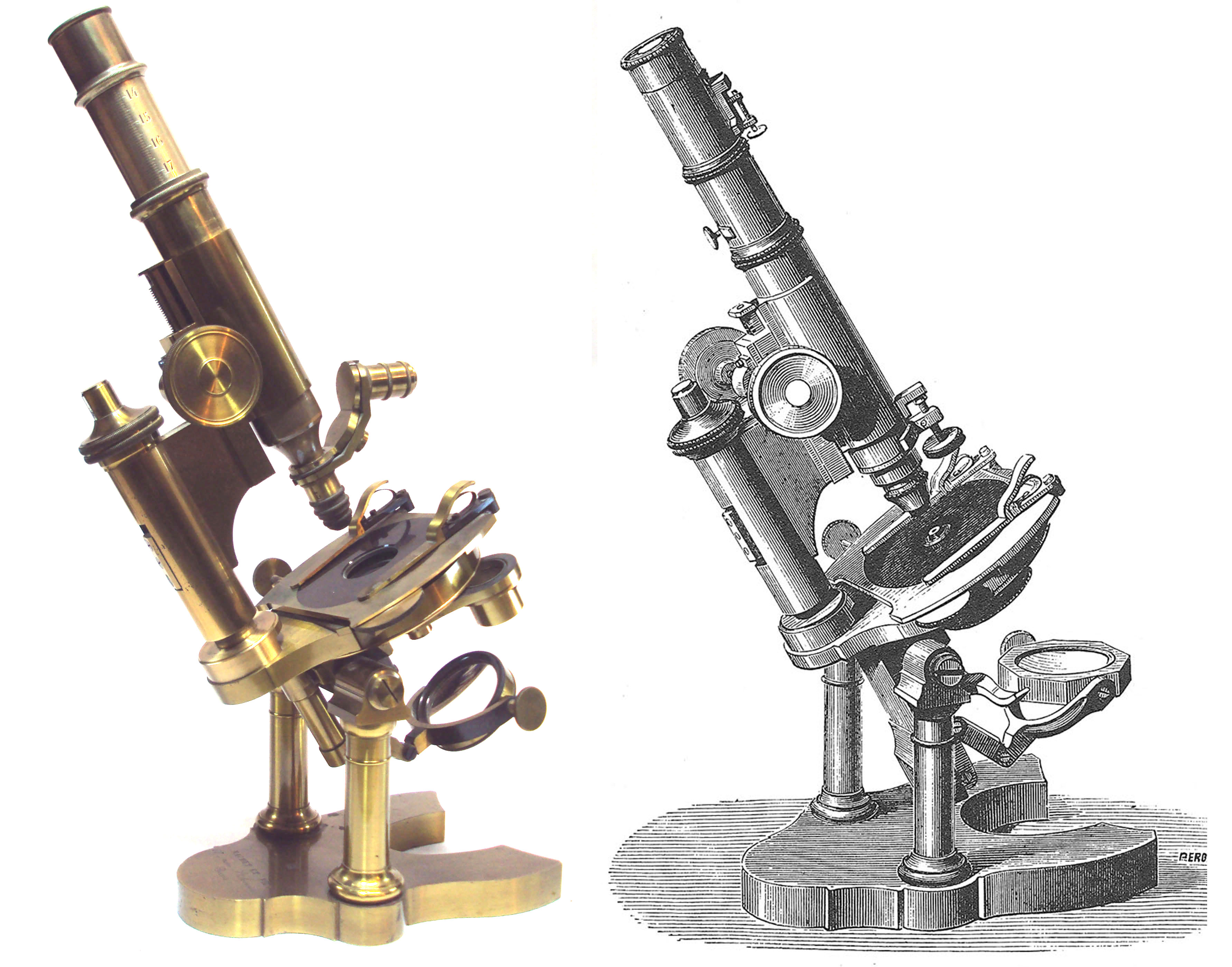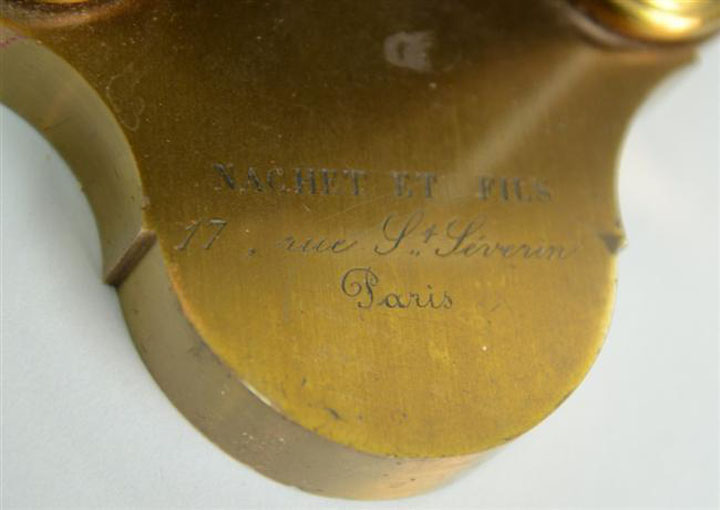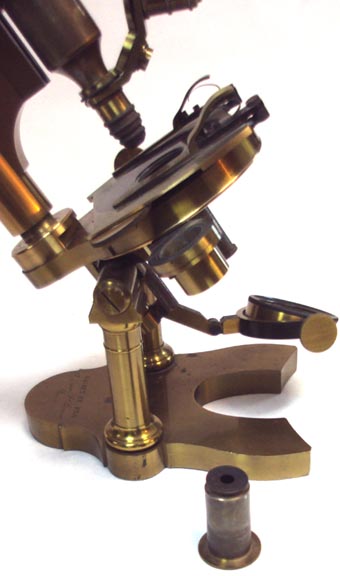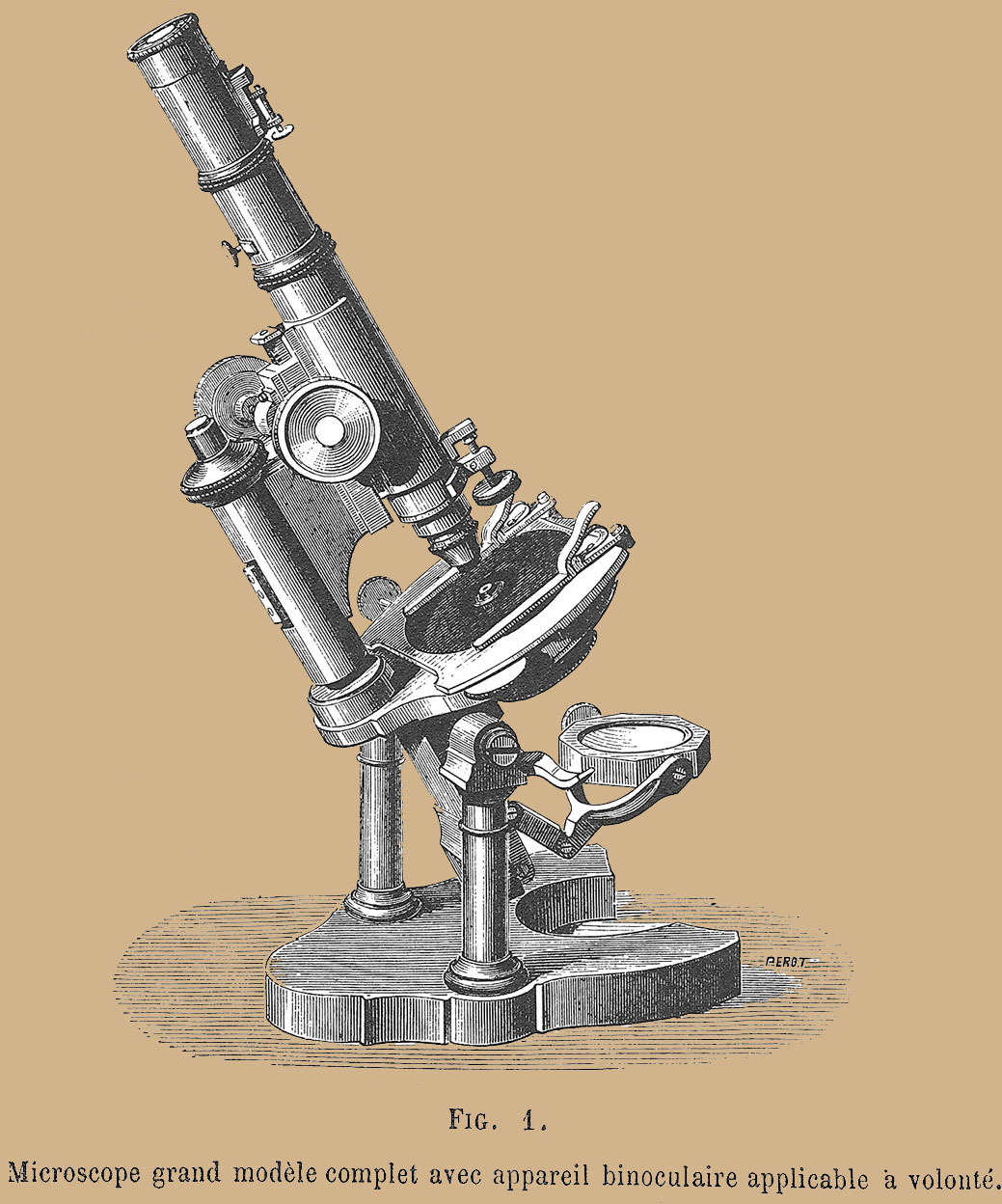NACHET ET FILS, 17 . rue St Severin, Paris'

| DESCRIPTION | HISTORY |
Please Click On Any Picture for a Larger Version


 Signed on the foot:
Signed on the foot: NACHET ET FILS 17 rue St Severin, Paris'. This is double pillar supported continental limb instrument. It comes with its original dovetailed case, lined in purple silk with padding. Several Nachet accessories are still present with the instrument.

 The unique mechanical stage combines left-right movement by knobbed screw on the left side
of the microscope, with forward-backward movement in an arc controlled by a geared disc on the right side; this disc is
knurled on on the outer side and is a gear on the inner half of its circumference. The stage clips point backward and
are sprung, with push-button release of tension.
The unique mechanical stage combines left-right movement by knobbed screw on the left side
of the microscope, with forward-backward movement in an arc controlled by a geared disc on the right side; this disc is
knurled on on the outer side and is a gear on the inner half of its circumference. The stage clips point backward and
are sprung, with push-button release of tension.
 An understage 'condenser holder'
swings out. A fitting slides in from below, and this fitting accepts accessories from above. These accessories include three different size pinholes, a diffuser screen and a polarizer. The distance from the slide can be adjusted by slideing the outer fitting in or out. There are two rods projecting down from the stage which, I assume would have supported an additional condenser.
An understage 'condenser holder'
swings out. A fitting slides in from below, and this fitting accepts accessories from above. These accessories include three different size pinholes, a diffuser screen and a polarizer. The distance from the slide can be adjusted by slideing the outer fitting in or out. There are two rods projecting down from the stage which, I assume would have supported an additional condenser.
 Nachet was a French microscope manufacturer making microscopes from 1839 until the middle of the twentieth centrury.
Camille Nachet, the founder, copied Lawrence Smith's invention of an inverted microscope, and Riddell's for binocular. The stands of Nachet are generally very well made and less flimsy than some other French makers. For an early Martin or Drum-type by Nachet, see here. Certain models, such as the 'Petite Modele,' also in this collection, were very popular. The name of the company changed over the years as noted below. Serial numbers were not used, so dating instruments is usually based on catalog engravings and the way the company name is signed on the instruments. Larger and especially the specialized Nachet microscopes such as the Grand, inverted and polarization stands are much less commonly seen than the 'Petite' model.
Note the engraving from the 1872 catalog to the left showing the same foot and mechanical stage as the example above.
Also note that the arrangement of the optical tube shown in the engraving, with facility for fine adjustment of tube length
is not present on my example,
nor is there a gripping screw on mine to secure the draw tube. The reason for the nosepiece fine adjustment on the optical tube
in the engraving is a mystery, since the continental fine adjustment on the rear, a much more modern design, would be far more satisfactory for
this purpose.
Nachet was a French microscope manufacturer making microscopes from 1839 until the middle of the twentieth centrury.
Camille Nachet, the founder, copied Lawrence Smith's invention of an inverted microscope, and Riddell's for binocular. The stands of Nachet are generally very well made and less flimsy than some other French makers. For an early Martin or Drum-type by Nachet, see here. Certain models, such as the 'Petite Modele,' also in this collection, were very popular. The name of the company changed over the years as noted below. Serial numbers were not used, so dating instruments is usually based on catalog engravings and the way the company name is signed on the instruments. Larger and especially the specialized Nachet microscopes such as the Grand, inverted and polarization stands are much less commonly seen than the 'Petite' model.
Note the engraving from the 1872 catalog to the left showing the same foot and mechanical stage as the example above.
Also note that the arrangement of the optical tube shown in the engraving, with facility for fine adjustment of tube length
is not present on my example,
nor is there a gripping screw on mine to secure the draw tube. The reason for the nosepiece fine adjustment on the optical tube
in the engraving is a mystery, since the continental fine adjustment on the rear, a much more modern design, would be far more satisfactory for
this purpose.